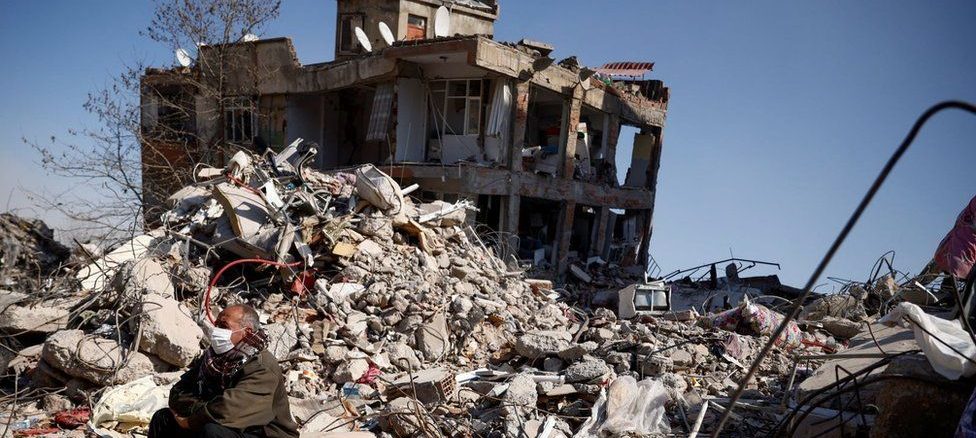
Rescue teams continue to search through the rubble in both Turkey and Syria today, as countries worldwide provide aid and stand in solidarity with civilians who have lost their lives.
Early Monday, the 6th of February, an earthquake of magnitude 7.8 struck south-eastern Turkey, near the Syrian border. President Recep Tayyip Erdogan declared a three-month state of emergency covering the ten Turkish southern provinces hit by a devastating earthquake.
Seven days of mourning were also announced to remember and hold close the lives destroyed by the disaster.
Reuters reports that the combined death toll from Turkey and Syria now stands at over 41,000 people and searches remain ongoing.
Táinaste Micheál Martin announced that Ireland is providing €2 million in aid to Turkey. Ireland’s Department of Foreign Affairs said the assistance will support immediate and urgent humanitarian needs on the ground.
Britain is sending 76 search-and-rescue specialists and an emergency medical team to Turkey. The United States has already sent 100 Los Angeles County firefighters and structural engineers, along with six search dogs to Turkey.
The World Health Organisation (WHO) said that Syria’s humanitarian needs are the highest. The organisation is dispatching emergency supplies, including trauma and emergency surgical kits, as well as forming a medical team to provide immediate aid.
Many civilians are angered by the lack of preparation as their loved ones remain missing.
Turkish journalist Gurkan Ozturan tweeted “I am sad, stressed, we are all grieving since we saw the news and for some of us who felt the first shock. But most of all, I am angry! There was work carried out for 25 years to avoid waking up exactly to this. Why did it fail?”
Both Turkish and Syrian infrastructures have faced severe devastation. Thousands of buildings were destroyed, including a state hospital in the city of Iskenderun. The extent of damage to infrastructure is not yet confirmed.
Buildings turning to dust so easily have raised questions about their safety from the beginning.
A prominent Turkish disaster management expert Professor Ahmet Cevdet Yalciner told the Toronto Star that there hasn’t been an equally strong earthquake in the region in 1,500 years.
He said that “the harsh weather conditions on top of the strong tremor is a contributing factor but Turkey has been experiencing infrastructure problems since its establishment. We should have built solid and durable structures”.
Structural engineer Gava Charles from Uganda provided insight on why so many buildings were destroyed saying that although there is no way to predict an earthquake, nowadays buildings can be designed in a smart way to prevent collapse in certain areas.
When asked what could have been done to protect against immense damage, he said “we should conduct a seismic vulnerability assessment. This can be from a two-pronged approach.
One can use GIS [Geographic Information System] tools to show the structures and thereby building classes in an area and then use structural engineering tools to determine the structural vulnerability of the different buildings or building classes in an area”.
He added that “A GIS map can be drawn to microzone an area and show the places that could be most vulnerable in case of a seismic event. With that, it can inform policy and risk mitigation strategy in the event of an earthquake”.
Ibrahim Haskologlu, a Turkish journalist, based in Istanbul said that he has been receiving voice notes from people still stuck under collapsed buildings and that they need urgent help.
He told the BBC that people are sending their live locations to him and other journalists, but there’s nothing they can do at the moment.
Louise Hickey
Image credit: Reuters
